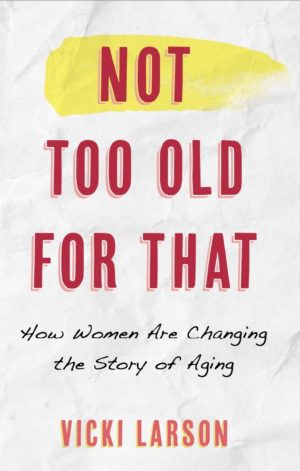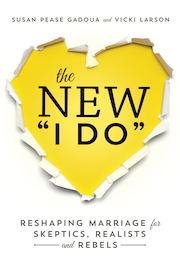When Mandy Len Catron wrote about her relationship contract with her partner in the New York Times’ Modern Love, it get a lot less love than her earlier and much-read Modern Love essay on the 36 questions that can lead you to fall in love with anyone, which led to her charming and insightful book, How to Fall in Love With Anyone.
“Relationship Contracts Are Just A Cheaper Version Of Marriage Vows” declared the Federalist.
 “A couple swears by a yearly 4-page ‘relationship contract’ — here’s what psychologists have to say about it,” Business Insider reported.
“A couple swears by a yearly 4-page ‘relationship contract’ — here’s what psychologists have to say about it,” Business Insider reported.
“The One Thing To Know Before You Enter A Relationship Contract,” Bustle warned.
And, surprisingly, a diss from the Gottman Institution in a blog post titled, “Why Conventional Marriage Wisdom Is Wrong.”
Not surprising, however, were the comments on her essay from readers who overwhelmingly took issue with the idea.
This matters to me because Mandy and her partner, Mark, both of whom I am fortunate to have come to know and spend time with, modeled their relationship contract on the contract presented in The New I Do, which she mentions in her book (thank you, Mandy!).
But that was a while ago, so I thought it might be a good time to check in with her to see how their contract has helped or hindered them since, and what tweaks, if any, they made to it.
I’m happy to know that it matters as much now as it did at the beginning — perhaps more.
Revisiting the contract
Their first contract, when they were about to move in together in 2015, was for six months. The second contract was also for six months, but by then they were already living together and so they had the wisdom of the day-to-day realities of their life together to know what needed to be adjusted and to add what they hadn’t even been thought of. And they have revisited it every year since.
And a lot has happened since that first contract, she told me in a conversation this past week. They bought a condo together in Vancouver, British Columbia, and moved into it in late April. They both took a leave of absence from their jobs — hers as a professor at the University of British Columbia and his in tech. They have been trying to conceive for the past year and a half and are now considering IVF; she’s 37, and she’s written about how men are often clueless to what women have to go through to have a baby.
Each of those steps is huge but cumulatively they’re beyond huge — enough to stress any couple, married or not.
When they moved into their new home, they signed a legal document — essentially a prenup — because in British Columbia, common-law couples are considered spouses after two years of living together. Since she was putting more of a down payment into their home than he was, the legal document, while important, was relatively standard.
Expressing needs
Their other private contract, addressing needs and desires, hopes and fears, is not standard at all. It’s geared toward their unique relationship. Mandy is mindful of how time to write is essential for her moving forward:
Because I’m a writer and because I had balanced a writing career and a teaching career for a long time, I have a lot of anxiety about time. When you’re doing creative work, time is super-valuable, and I always think about money, OK, how much time can this buy me to do more writing. So my fears about having kids are the cost of it but also the time. How does one be a writer and have a family?”
While Canada has generous family time and the majority of her female friends take it, many of their male partners do not. She’s not OK with that, and because she’s a freelancer and doesn’t have guaranteed family leave, guess what — that’s what’s up for discussion in their relationship contract.
“That’s something we’d try to negotiate and I feel like the contract is a good tool because I would want to use that to talk about caregiving,” she says.
Mark has said he thinks he’d be good as the at-home parent, but because he has the capacity to make a lot more than she can, that’s another thing they’re talking about and plan to put in their contract.
No more silence
These are complicated discussions, ones that address identity, gender, power, equality and much more. Still, she says, having a contract from the start of their relationship opened a path of communication and understanding that has made those conversations a lot less stressful:
Early in the relationship, it’s really hard to talk about this stuff. It leaves you really vulnerable and you often feel like there’s these gender stereotypes that influence what you feel comfortable talking about … The contract has been really nice to give us a structure to kind of talk about these things. And now talking about all these things are much easier. Not to say that it’s effortless, but we got good at it because we had a reason to do it. So often, especially in heterosexual relationships, there is so much silence around these questions — would we get married, should we have kids, does the other person want what we want?”
Their contract doesn’t allow for silence.
There’s been an overwhelming amount of media lately about how women, especially when they become moms, are still shouldering the bulk of the household chores and caregiving, including books such as Amy Westervelt’s Forget Having It All: How America Messed up Motherhood — and How to Fix It and Gemma Hartley’s Fed Up: Emotional Labor, Women, and the Way Forward.
These are important discussions, and while changes in public policies that support caregiving and address inequalities are essential, just as important are the way we shape our private relationships, which is ultimately a couple’s responsibility. Mandy and Mark’s contract has helped them do that — would a contract help you, too?
Want to learn how to create a relationship contract? (Of course you do!) Then read The New I Do: Reshaping Marriage for Skeptics, Realists and Rebels (Seal Press). You can support your local indie bookstore or order it on Amazon.
















